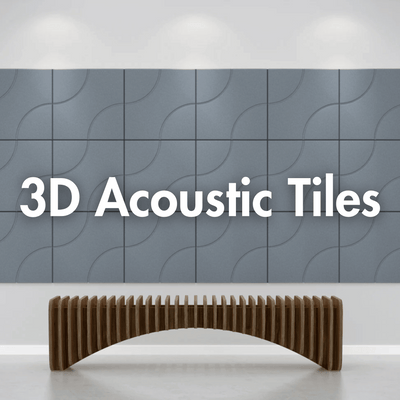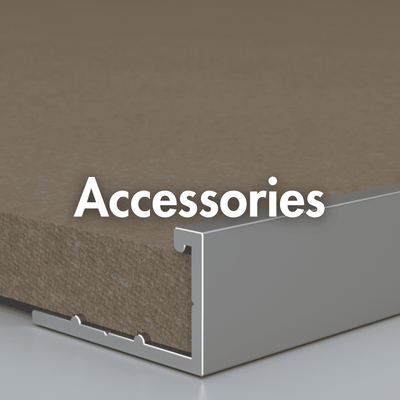Echo vs. Reverberation: Understanding the Differences
In our daily environments, we’re surrounded by sounds that can make or break our experience in a space. In offices, classrooms, or studios, sound clarity is essential for communication and productivity. But when sounds persist, they can create a chaotic atmosphere, disrupting focus and increasing stress. Two common sound phenomena, echo and reverberation, play a significant role in how we perceive sound within a room, and understanding their differences is crucial for effective acoustic design.
What Are Echo and Reverberation?
Echo and reverberation both describe how sound waves behave after hitting surfaces, but each has a distinct effect on our perception of sound.
Echo
Echo occurs when sound waves reflect off a surface and return to our ears with enough delay for us to perceive it as a separate sound. This is most common in large, empty spaces with hard surfaces, where sound waves have a long distance to travel before bouncing back. An example of echo would be yelling in a canyon or empty hall and hearing your voice return clearly after a brief pause.
Echo can cause distractions, making it difficult to understand speech, especially in environments like lecture halls or conference rooms. When sound bounces back as a distinct repetition, it can interrupt the natural flow of speech and impair listening comprehension.
Reverberation:
Reverberation is the persistence of sound within a room due to continuous reflection off surfaces, creating a “blurring” of the original sound. Unlike an echo, which returns as a distinct repetition, reverberation is perceived as an extended, lingering sound. Think of reverberation as the soft hum that lingers in a room when multiple surfaces reflect sound waves in quick succession.
Reverberation, though less obvious, can significantly affect clarity. In a room with high reverberation, sounds merge, making it challenging to differentiate between spoken words. This “muddy” effect reduces sound clarity, making conversations difficult to follow and causing fatigue for listeners.
Reducing Echo and Reverberation with Acoustic Solutions
Fortunately, modern acoustic solutions offer ways to reduce both echo and reverberation, creating clearer, more comfortable spaces. The ideal approach depends on your specific sound issues and environment.-
For Echo Reduction: When dealing with pronounced echoes, the key is to break up sound paths and prevent sound waves from traveling long distances. Acoustic panels on walls and ceilings are highly effective for this purpose. These materials absorb sound rather than reflecting it, stopping echoes before they occur.
- For Reverberation Reduction: To minimise reverberation, absorbing surfaces are needed to trap and soften sound as it bounces around the room. Installing soft, porous materials - such as acoustic wall tiles, ceiling clouds, or acoustic lights - absorbs sound waves and reduces the persistence of noise, creating a more controlled, focused atmosphere.
Factors Influencing Echo and Reverberation
-
Room Size and Shape: Larger rooms with high ceilings and open layouts are more prone to echo. Irregularly shaped rooms tend to experience less reverberation, as sound waves are diffused rather than repeatedly bouncing between parallel surfaces.
-
Surface Materials: Hard, reflective surfaces such as concrete, glass, or metal amplify both echo and reverberation, while soft, porous surfaces like fabric, carpet, and acoustic panels help absorb and dissipate sound.
- Furniture and Objects: Rooms with minimal furnishings allow sound to travel freely, increasing the likelihood of both echo and reverberation. Adding soft furniture, curtains, or wall hangings can help break up sound waves and reduce both effects.
How Acoustic Sound Products Can Help
At Acoustic Sound Products, we understand the nuances of echo and reverberation and offer a range of solutions tailored to each. Whether you need to reduce echo in a large auditorium or minimise reverberation in an office, we provide effective products to address these issues. Our team assesses each space’s unique characteristics, recommending materials and layouts that optimize sound quality, reduce distractions, and improve communication clarity.
FAQs
Can I have both echo and reverberation in the same space?
Yes, it's possible. Echoes often occur in large, empty rooms, while reverberation can be more prevalent in rooms with multiple reflective surfaces. In such cases, combining echo and reverberation-reducing treatments may be necessary.
How do I know if my space has an echo or reverberation problem?
Answer: If you hear distinct repeated sounds, you likely have an echo problem. If sounds blur and linger, making speech difficult to understand, reverberation is likely the issue. Professional acoustic assessments can identify the exact problem.
Can I reduce echo and reverberation on my own?
Small improvements, like adding rugs, curtains, or wall hangings, can help. However, for significant noise control, professional acoustic solutions are recommended, especially in large or commercial spaces.
Are echo and reverberation solutions the same?
Not always. Echo is best managed by breaking up sound paths, often with wall-mounted panels. Reverberation is reduced by increasing sound-absorbing surfaces like ceiling clouds or wall tiles to dampen continuous reflections.














